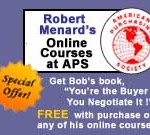Editor’s note: For those who want to test their knowledge of purchasing law, click here to take the Purchasing Law Quiz.
There is perhaps no single topic of greater fascination to the average purchasing practitioner than purchasing law. The foundation of purchasing and sales law in the US is the Uniform Commercial Code (UCC). The UCC is not a federal law, but operates similarly in that it applies uniformly from state to state. The UCC is a set of laws affecting the purchase and sale, storage, transportation, security, and payment of goods having a value of more than five hundred dollars. This body of law evolved throughout the 20th century, gaining momentum during the great Depression years. Our maturing, technologically advanced nation had economic and security motivations to homogenize all the fractious commercial laws of economically divergent states. It would be easier for business if one common set of statutes applied across state lines.
Lest you conclude that the UCC is too esoteric, let’s take the case of oral contracts. Oral contracts are common and almost everybody engages in them, so how does this common custom affect negotiation? Well, if you have invested time and money establishing and negotiating your company terms and conditions, perhaps a Certification program, you have wasted your efforts. The wisdom of Sam Goldwyn applies here; “An oral contract isn’t worth the paper it’s written on.” This statement frequently surfaces in defense. “We have always done it this way.”
Conduct of the parties
This leads us to the legal principle called conduct of the parties. This principle states that a contract may be made in any fashion including conduct of the parties that recognizes such a contract. This means that if we negotiate a deal that calls for shipping of goods on some acceptable schedule, receipt, invoice and payment and we are mutually happy with this deal, great. The problem arises when the process breaks down. Whose terms and conditions apply in this case of default? Do you agree that this is getting messy? We would spend more in legal fees to untangle this mess than we would have in prudent study of purchasing law as it applies to negotiation.
The UCC governs transactions involving goods in virtually the same fashion in forty-nine of the fifty states, Louisiana being the exception. The Napoleonic civil code, the historic basis for Louisiana’s laws, did not, and still does not correspond to the prevailing laws in all the other states. Save for that exception, the balance of the country is in accord with the UCC.
Four conditions of a contract
The UCC and the law of Contracts specify that these four below conditions must be met for a contract to be formed. This is essential information to the negotiators, be they buyers or sellers. We will examine each for impact on negotiation because they contain much information, almost none of which is obvious.
- Competent parties
- Valid legal subject matter
- Mutual consideration
- Agreement of the parties (offer and acceptance)
Competent parties has the usual meaning age of majority, unduly affected by drugs, alcohol, or dementia, but it has another more subtle meaning. Competent parties also means that buyer and seller have the authority to enter into a contract. We will assume here that the contracting parties are corporations that act through agents to conduct purchase and sale negotiations. An immediate question that should arise is does this person have the authority to negotiate. The question applies to buyer and seller, but not equally.
Does the average salesperson have the authority to negotiate a contract? The fact is that the generic salesperson or “drummer” has very little authority. They are authorized to solicit orders and take these invitations back to higher corporate powers for approval. Thus the law provides the basis for the negotiation tactic that we call ‘Higher Authority’. How about the buyer, does he or she have the authority? The answer is yes and is the reverse of the seller. It comes as a surprise to most people that the buyers have at least the apparent authority and the sellers do not. But we are not done.
Further complicating this competent parties issue is the actual authority of the buyer. Many have signature authorities that limit the dollar amounts or types of purchases they may make. If a buyer acts beyond his or her authority level, the deal may be unenforceable and the buyer may become personally liable. The UCC imposes the burden upon the agent to determine the scope of authority the agent with whom they are dealing possesses. As a practical matter, who wants to invest all the time and effort in chasing down an unenforceable deal? Negotiators must establish the authority of the other person before proceeding in any meaningful fashion.
Valid legal subject matter is important because we cannot legally contract for illegal activities. Return to our literary business magnate, the Godfather. Allegedly, Don Corleone issues ‘contracts’ on others who disagreed with him. These contacts for hits are illegal and enforceable because the subject matter is illegal. A more mundane example is the agreement of buyer and seller to ship in state but invoice to the out of state office in order to avoid the sales, use, or inventory taxes. Here is a clear example of the professional interplay between you and your lawyer. You perk up at the very suggestion and refer this matter to your lawyer. The legal principle is that parties cannot conspire to violate the rights of the sovereign (state, in this case). Moreover, while tax avoidance is legal, tax evasion is not.
Mutual consideration refers to the exchange of value between the parties and is generally not a misunderstood topic. Sometimes parties agree to no-cash consideration such as barter. If you are unfamiliar with the legal or tax consequences, you defer here again to competent legal advice.








